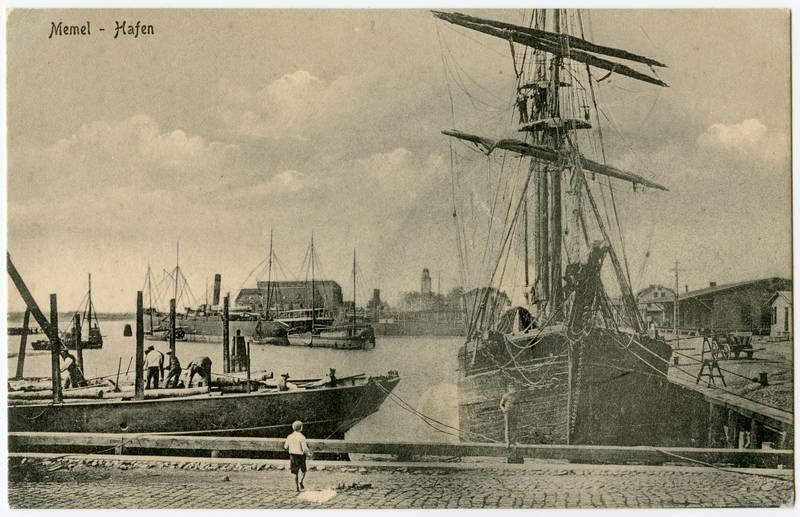The Ice-Free Port of Klaipėda

This route has been developed for the 360th anniversary of the sea trade – in 1657 the Duke of Prussia granted Memel (currently known as Klaipėda) the privilege of free trade.
Open sea routes, connecting the ports of the world is a great advantage of all port towns and cities.
Throughout history they determined successful trade, promoted the distribution of scientific and technological innovations, as well as cultural exchange.
Shipping had even a greater influence on the composition of port towns’ population and customs than political dependence. All European ports, including Klaipėda, feature the same three stages of historical development: Viking, Dutch and English.
We will explore the objects, related to the sea, that we have today. Which of them have historical memory? We will also remember what, unfortunately, has been lost in the sea of history forever. Our overview will not follow a chronological order. This route will touch only a little share of the city’s marine historical past and present. In order to explore everything we’d need several tours…
First of all we will look around Dangė embankments, currently referred to as Yachtsmen’s Embankment, hosting the 20th c. marine heritage – bollards. We will also remember the port of Dangė, warehouses and the old shipping companies.
Then we’ll take a walk to the pedestrian ferry at the end of the river, taking stops and talking about what we see around. When the ferry leaves into the Curonian Lagoon, that is, Klaipėda Strait, connecting the lagoon with the sea, we will see the views of Klaipėda State Seaport of the Republic of Lithuania, opening before our eyes. The deep water harbour berths stretch for more than twenty kilometres from the lighthouse of Klaipėda in the north to the marshy island, referred to as Kiaulės Nugara (which means the back of a pig), in the south, harbouring ocean-going vessels, greeted by the steel “giraffes”– portal cranes – and the clanging of railway trains just unloaded or loaded with a new cargo and ready to leave. The variety of ships of all kinds and sizes is immense. We will be able to identify the countries they’ve come from if only we can see the shipowner’s flag in the back. The front of any ship features the Lithuanian flag, thus showing respect for the port.
We will take the ferry to the northern part of the port and look around the berths until the Sea Gate. On the right side we will wave to the berths that belong to various port companies. Then, enjoying our chat and the refreshing winds of the Curonian lagoon, we will reach the other side.
Here – in Smiltynė – we will leave the ferry and take a walk along the embankments of the lagoon to the pier. On our way we will stop near the ethnographic fisherman’s homestead and the exposition of the old fishing vessels. We will also visit the cemetery of Kopgalis village and the final resting place of Liudvikas Stulpinas, the first Lithuanian Sea Captain (1871-1934), and Jonas Žilius-Jonila, the poet, publicist and Governor of Klaipėda Region (1870-1932).
Then we will pass the complex of the Lithuanian Sea Museum and Dolphinarium. Our route will end at the pier.
The tour, including the ferry ride will take about 3 hours. Our walking distance will be around 5 km.